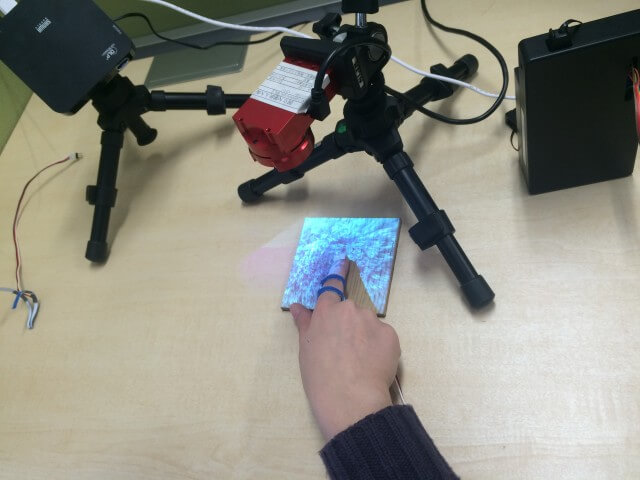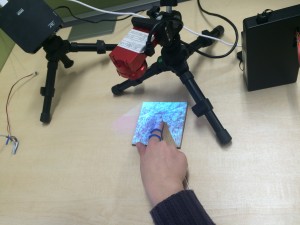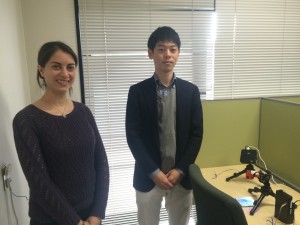External nerve stimulation for simulating virtual touch

Growing up in the family devoted itself to curing patients made me dream to help people to live their lives happier in my own career. Hence, I went to dental school but I wanted more abilities, so I decided to come to Japan to continue my studies in PhD course. In this long journey, I found out there is a need for an efficient cure for people with jaw movement disorder. Using my research findings I developed an idea for a device to answer this need. However, developing new cures is not the only thing I learned living among international researchers and scholars, I also learned the importance of globalization. So, I decided to start my internship at Leave a Nest to accomplish these targets; helping people and growing globally.
To progress the new device development, I am contacting related scientists and possible partners to do discussion and brain storming with them. Here is the first one.
External nerve stimulation for simulating virtual touch
Background: Dr. Yoshimoto a talented researcher, who finished his graduate courses (Master and PhD) in just 3 and half years, is an assistant professor in Graduate School of Engineering Science at Osaka University. His main research interests include virtual reality technology, haptic interface, and biomedical instrumentation. His research focuses on the development of the small tactile display which can present texture sensation, and proposes tactile rendering method by using electrical stimulus. Especially, texture representation will be achieved by characterization of the skin displacement and its reflection in the stimulus pulse rate.
Meeting detail:
Venue: Osaka University, Toyonaka Campus, Graduate School of Engineering Science, Building J512
Time: 2015/02/09 (Monday) – 13:00 to 14:00
Participants:
Leave a nest side: Dr. Satoshi Nishiyama and Dr. Sanam Bakhshishayan
Osaka University: Dr. Shunsuke Yoshimoto
Meeting was carried out to discuss ideas on external nerve stimulation. The meeting started by introducing leave a nest and continued by hearing about the research projects of Dr. Yoshimoto. In continuation the basic idea of development of the device for sending signals from skin to the trigeminal nerve, was discussed.
Through discussion it was determined that to apply the suitable electrical stimulation to the nerve from the skin surface, three following aspects of the electrical signal that affect the strength of the stimulation should be designed at first; Pulse amplitude, pulse interval and pulse duration.
Another very important factor is the depth of the nerve under the skin s very important factor in transforming the signal to the right place. As an example, in Dr Yoshimoto`s experiment two electrodes were attached to the medial part of the right index finger, while one ground electrode was attached to the proximal part of the same finger. Electrical signal for each electrode and for each participant was specified based on their sensitivity. By changing the pattern of the stimulation, from touching the same surface different textures would be felt.
Using the above technology, Dr. Yoshimoto is also doing a joint research with the dentistry school to develop an especial glove for the students who are under training. The electrodes in the glove would help the students to understand the appropriate angle of the instrument during the tooth carving.
Conclusion: At the end of meeting, the possibility of the proposed idea was approved under following circumstances; Developing the electrical device has 3 essential steps; Designing the stimulation pattern, designing the electrical circuit and developing the device. Also it was confirmed the device development technology is available in the industry.


